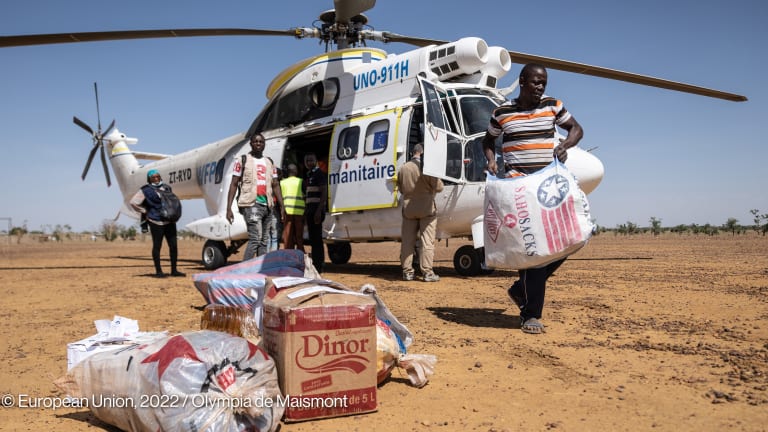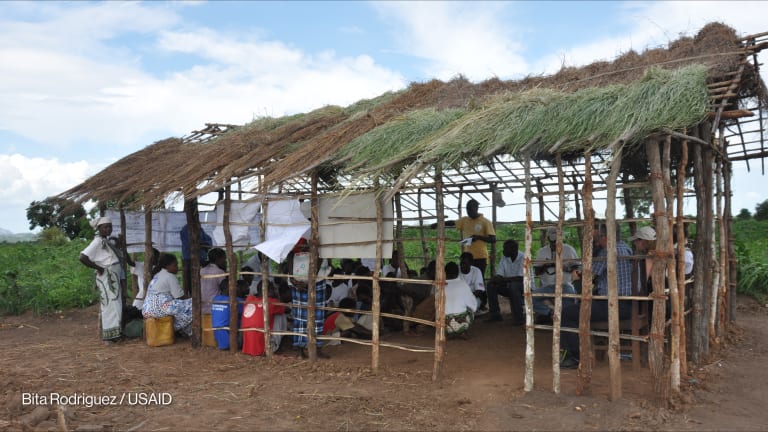
NEW YORK — As Yemen’s civil war stretches into its fifth year, international relief organizations on the ground recognize one constant: Civilian needs continue to rise.
“Nothing has changed in the sense that we still face the same huge obstacles and barriers that we have over the last several years, but the number of people we are trying to reach are growing each year,” said Alex Hilliard, a Sanaa-based policy and communications coordinator at CARE.
More on Yemen:
► As Senate votes on Yemen, WFP says it can't meet country's need
► UN warns of worsening famine in Yemen
► USAID tried — and failed — to convince Saudi Arabia not to strike civilian targets in Yemen
More than 24 million Yemeni people, or 80% of Yemen’s population, are considered food insecure and require some kind of assistance from the 131 international and national groups responding to the conflict. The number of people now in need is 27% higher than it was in 2018, according to the U.N. Office for the Coordination of Humanitarian Affairs.
Groups like the World Food Programme are working to scale up work across Yemen, which U.N. Secretary-General António Guterres has repeatedly called the “world’s worst humanitarian crisis.”
But the front lines remain active and continue to change across the country, complicating efforts by international aid organizations to reach people trapped in some conflict hot spots, and to complete real-time assessments of populations in need. Funding shortages, as well, continue to impact relief work.
WFP aims to feed 12 million people each month this year, marking a 50% increase from 2018 targets of reaching 8 million per month. In March, WFP reached 10.6 million Yemenis — the largest number reached in a single month so far, according to Annabel Symington, a communications officer with WFP in Yemen.
“WFP is the largest organization here and our caseload is of 12 million people, about 40% of the population. It is quite staggering numbers we are dealing with here,” Symington said, describing a sense of fatigue among civilians as the conflict drags on.
“We have been pushing to get up to 12 million people a month and that is something we really need to do, based on the scale of the need in Yemen," Symington continued.
Waves of displacement
The United Nations brokered a deal between the warring Houthi rebels and the internationally recognized government of Yemen to demilitarize the port city of Hodeida in late 2018. But implementation of the partial truce, known as the Stockholm agreement, has stalled for the last six months.
Many main routes are inaccessible, pushing humanitarian organizations to travel through back roads and remote, insecure areas with checkpoints. The parties to the conflict have also shown increased scrutiny of the U.N. and international NGOs, manifesting friction with some authorities, according to one international aid worker.
It is not clear how many Yemenis are living beyond the reach of potentially life-saving humanitarian assistance, said Sultana Begum, an advocacy manager for the Norwegian Refugee Council in Yemen.
"In the south, one of the main roads from Aden to Sanaa has been cut off by the fighting so that raises a lot of concern, as it is the main supply route from the south to the north,” she said. “It is hard to know how many people are trapped by the fighting. We cannot get to those people and they cannot get to us, so it is quite a depressing situation at the moment.”
And waves of internal displacement have pushed some communities to relocate four or five times within the last several years. Some CARE national staff members have also been forced from their homes, according to Hilliard.
“It is an active conflict and the front lines are shifting on a regular basis and that prompts movement of people. There are many families who were forced to flee multiple times and move to a safe place, then the front line shifts again and they are forced to flee again,” Begum explained. “Making sure we are responding to these movements of people is a huge challenge."
The 2019 Yemen Humanitarian Response Plan requires $4.2 billion, and so far stands funded at 21%, according to OCHA spokesperson Federica D'Andreagiovanni.
“Yemen is currently the biggest humanitarian operation globally. Despite the severity of needs, funding is a challenge,” she wrote in an email.
WFP, running the biggest operation in Yemen, is also seeking $442 million to ensure uninterrupted access through October, according to Symington.
“WFP has not had to scale back any assistance yet, but the funding is urgently needed to ensure that does not happen,” Symington said.
Because last year’s operations were relatively well funded, the risk of famine in Yemen has reduced, Mark Lowcock, U.N. under-secretary-general for humanitarian affairs, told the U.N. Security Council earlier this month. One-fifth of districts at risk of famine last year are not currently at risk, he said. But the “slight improvements” now visible in the country cannot be sustained if donors do not fund the relief operations, Lowcock said.








